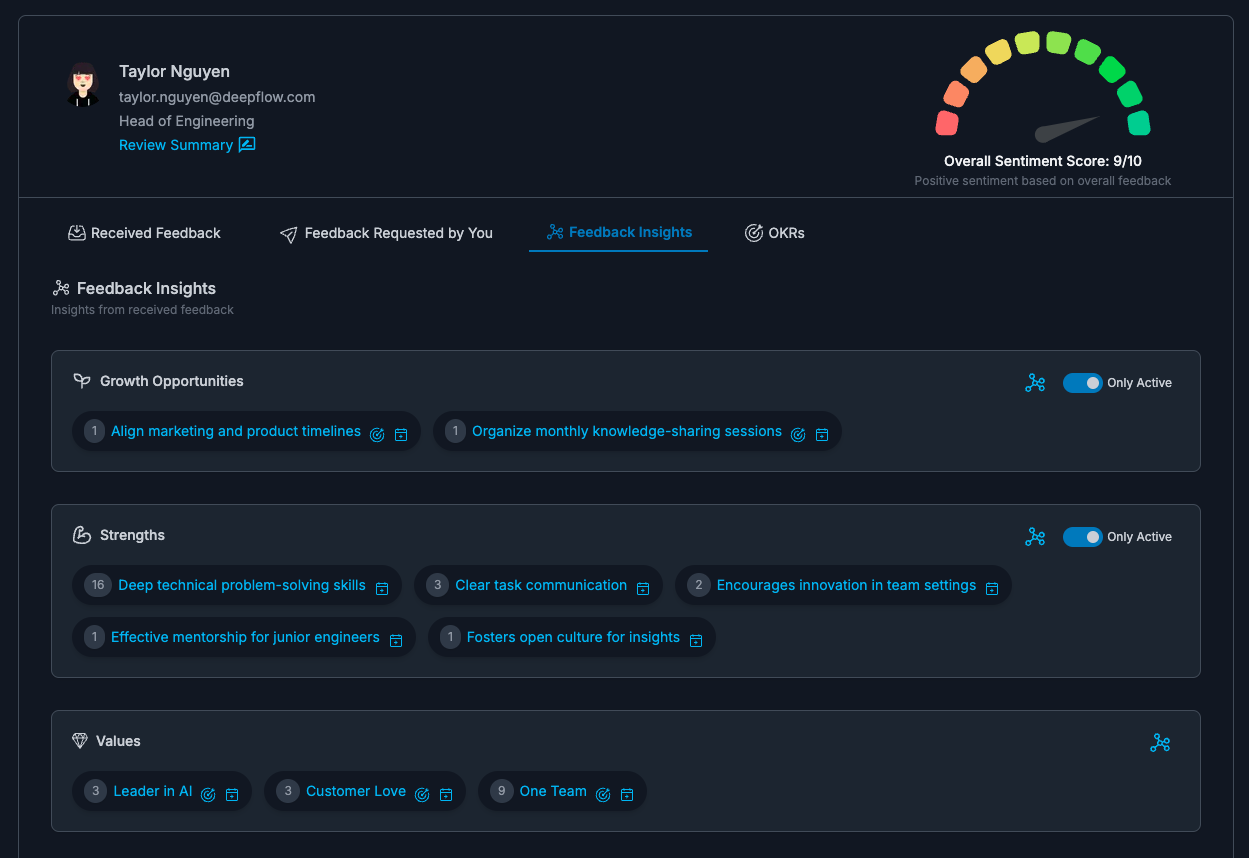Direct report dashboard
The Direct report dashboard provides managers with a single view of each direct report's performance, development, and ongoing work. It consolidates key information like feedback, growth insights, sentiment trends, and OKR progress in one place, reducing the need to switch between different views.
Why it matters
Having a centralized view helps managers track growth patterns, prepare for 1:1 meetings, and follow up on development areas without relying on memory or scattered notes. It provides a snapshot of recent activity along with historical trends to support better conversations and decision-making.
How to access the dashboard

- Go to Team from sidebar/topbar.
- Select the person whose dashboard you want to view.
- The dashboard is also accessible directly from 1:1 meetings with that individual.
What the dashboard shows
-
Feedback received and shared with the manager
- View feedback the team member has received from peers, managers, and others.
- Includes both direct and manager-shared feedback.
-
Feedback requests made by the manager
- Track feedback requests the manager has sent to gather insights about the direct report.
- Shows the status of requests and any outstanding nudges.
-
Feedback insights
- Summarized growth opportunities, strengths, and demonstrated values based on recent feedback.
- Insights are presented in an accessible format and can be added to 1:1 agendas or linked to OKRs.
-
Sentiment score and trends
- Displays how others perceive the team member’s contributions over time.
- The sentiment graph shows changes and patterns to help managers understand when to check in or offer recognition.
-
OKR progress
- Displays all published objectives and their key results, with real-time updates on manual and automatic measurements.
- Progress is shown with a clear visual indicator to track goal achievement over time.
Using the dashboard during 1:1s
When preparing for or conducting a 1:1 meeting, managers can:
- Add feedback insights to the agenda to discuss growth or strengths.
- Review OKR progress to track ongoing development or blockers.
- Refer to sentiment patterns to better understand context for recent work.
Tips for using the dashboard effectively
- Prepare in advance: Check the dashboard before 1:1s to gather context.
- Look for patterns: Use the insights and sentiment graphs to spot trends, not just one-off feedback.
- Link insights to OKRs: Convert growth opportunities into measurable objectives to support development.
FAQs
Who can access a direct report’s dashboard?
Only the person’s manager can view the dashboard.
How often does the dashboard update?
Data updates in real time as feedback, insights, and OKR progress are updated.
Can feedback be filtered?
Yes, feedback can be filtered by time period, feedback sender.
Next steps: